Thinking about living in a tiny house? These small homes are gaining popularity. Many people want to live simply and sustainably. But, before you decide, it is important to know their size. Tiny houses can either sit on wheels or on a foundation.
This article will explain their sizes. It will also talk about trailers and show examples. You will learn which tiny home might be best for you.
What Defines a Tiny House?
People consider a tiny house between 100 to 400 square feet. The size can vary based on whether the house on a fixed foundation or designed to be mobile. Fixed tiny houses are often customizable and built to local codes, while tiny houses on wheels are subject to road regulations about size and weight.
This mobility allows for travel but usually results in smaller space due to restrictions on the size of the trailer.
Fixed vs. Movable Tiny House
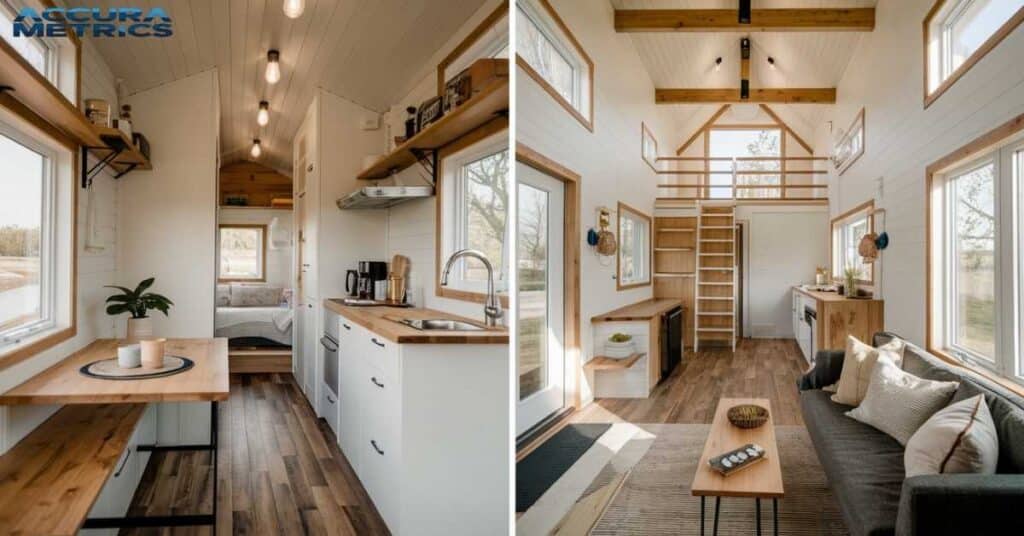
Fixed tiny homes are on foundations, similar to traditional houses but much smaller. These homes often have more flexibility in design and can be customized to local building codes.
While tiny houses on wheels are designed to be mobile, built on trailers, and must comply with road laws regarding width, height, and weight. The major benefit of a THOW is its mobility, but this often comes with compromises in terms of space and design flexibility.
Average Size of Tiny Houses
Understanding the average size of tiny houses can help you gauge whether this lifestyle will work for your needs. One the other hand tiny homes are known for their small spaces. The size can vary widely depending on factors like the number of people living in the home, the intended purpose, and whether it is on wheels.
What “Tiny” Means in Terms of Square Footage
Most tiny homes fall within the range of 100 to 400 square feet (9 to 37 square meters). This is a significant reduction from the average size of a traditional home, which is typically over 2,000 square feet in the U.S.
Here is a breakdown of what you can expect for different size categories:
- Under 100 square feet: Micro cabins or minimalist single occupant homes.
- 100-200 square feet: Compact homes ideal for individuals or couples, offering more functional space.
- 200-400 square feet: These homes provide a bit more room, often suitable for small families or those who want more space for things like a home office or a larger kitchen.
Factors Influencing Tiny House Size Choices
The size of a tiny house is influenced by several key factors:
- Number of occupants: A single person needs less space than a family.
- Intended use: A tiny house used as a vacation home might have different space requirements than one used as a full time residence.
- Mobility needs: Tiny houses on wheels tend to be smaller due to road travel restrictions.
For instance, tiny homes for full time living typically range from 200 to 400 square feet, with designs that maximize storage and multi functional furniture.
Read More “How Far is 50 kilometers (km)? 11 Common Comparisons”
Tiny House Trailer Dimensions
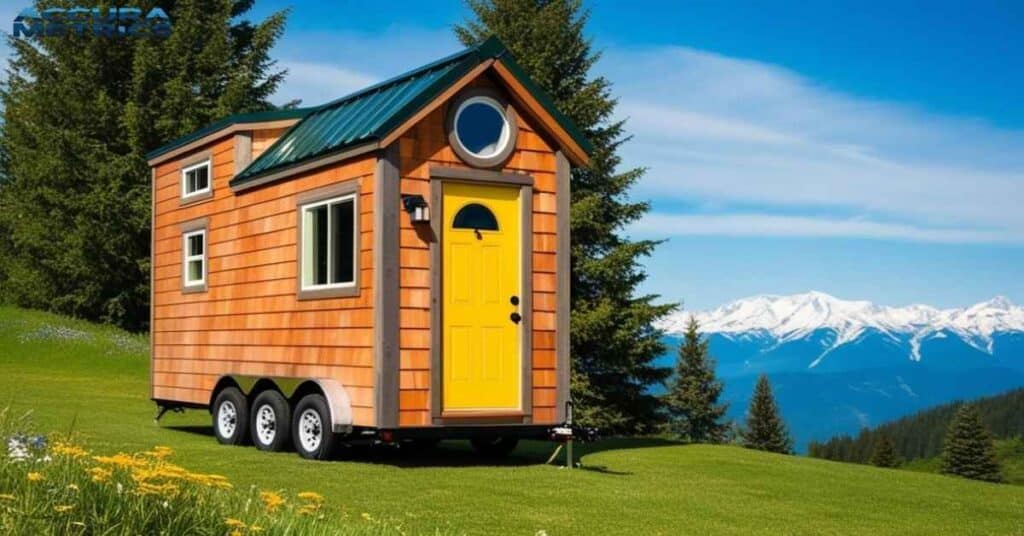
For tiny houses on wheels, understanding trailer sizes and the legal dimensions of mobile homes is crucial. Tiny house trailers must adhere to specific regulations regarding width, height, and weight, particularly when moving from one place to another.
Standard Trailer Dimensions for Tiny Houses
A standard tiny house trailer typically has the following dimensions:
- Width: 8 feet 6 inches (2.5 meters) the legal limit for road vehicles in most places.
- Height: 13 feet 6 inches (4.3 meters) the maximum height allowed for road travel in the U.S. and many other countries.
- Length: Up to 30 feet (9 meters) this length can vary, but most tiny houses on trailers are 24-30 feet long to stay within legal limits.
These dimensions are designed to make tiny homes roadworthy while maximizing the available space for living. However, it is important to note that a tiny house trailer must also be strong enough to handle the weight of the home, including the weight of furniture, appliances, and occupants.
Tiny House Trailer Weight Considerations
The weight of the tiny house trailer is one of the most important factors when it comes to mobility. Most tiny houses on wheels weigh between 10,000 to 20,000 pounds (4.5 to 9 tons), depending on size and materials used.
Legal Weight Limits
In the U.S., tiny houses on wheels usually have a weight limit of about 14,000 pounds (around 6,350 kg), but this can change depending on the state. If a trailer goes over this weight, it may need a special permit. Going over the limit could also cause fines or delays while transporting.
Safety and Towing
The weight of a tiny house directly impacts the type of vehicle required for towing. A larger THOW (20,000 pounds or more) will need a more powerful vehicle, such as a heavy-duty truck, to safely move it. It is essential to ensure that the combined weight of the trailer and home does not exceed the towing capacity of your vehicle.
Examples of Common Tiny House Sizes
Tiny houses come in a wide range of sizes, from micro cabins that barely fit a bed to spacious homes that can accommodate small families. Here is a look at some common tiny house sizes:
Under 100 Square Feet
These homes are typically micro cabins or studio style tiny homes, often built for single occupancy. They usually feature simple layouts with a bed that doubles as a couch, a small kitchenette, and a compact bathroom.
Example:
- A 5×10 foot cabin with a bed that folds up into the wall and a small kitchenette with a mini fridge, stovetop, and sink.
100-200 Square Feet
These tiny houses are more functional and can comfortably fit one or two people. They may include lofted beds, full kitchens, and even small bathrooms.
Example:
- A 12×16 foot tiny house with a small loft for sleeping, a combined living and dining area, and a fully functional kitchen with storage.
200-400 Square Feet
Larger tiny homes, often suitable for couples or small families, feature separate sleeping areas, a full kitchen, and larger bathrooms. These homes often use multi functional furniture and innovative storage solutions to maximize space.
Example:
- A 16×24 foot tiny house with two bedrooms (one loft), a living room, a full kitchen, and a bathroom with a shower.
Read Amazing about: “Mount Everest: Its Measurement and Other Fascinating Facts”
Practical Layout Ideas for Tiny Homes
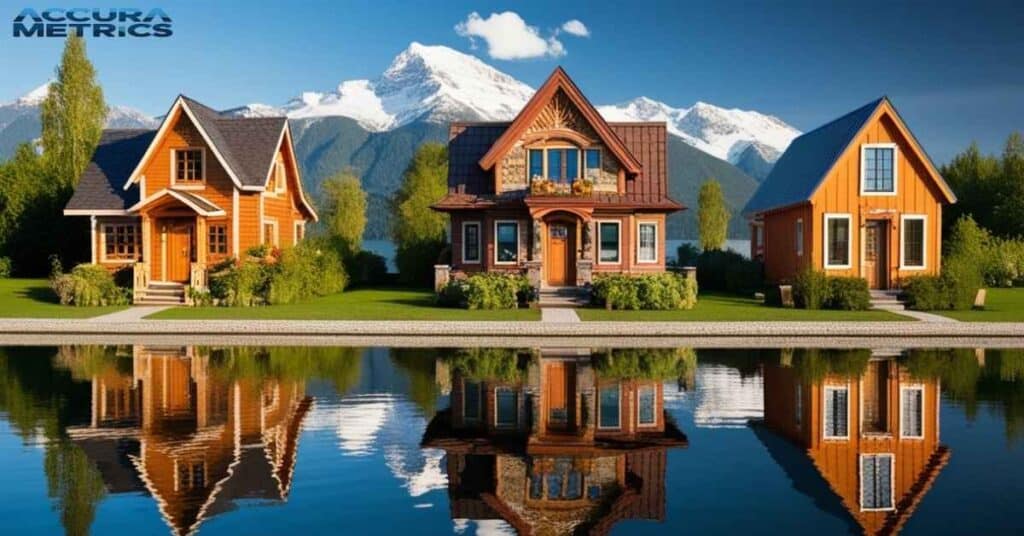
When designing a tiny home, space is at a premium, so it is important to make every square foot count. Below are layout suggestions for different tiny house sizes.
Under 100 Square Feet Layout Tips
- Multi functional furniture: Use fold out tables, Murphy beds, and hidden storage solutions to maximize space.
- Vertical storage: Install shelves and hooks on walls to store clothes, kitchenware, and other items.
- Outdoor living: Incorporate a small porch or deck for extra living space.
100-200 Square Feet Layout Options
- Lofted areas: A loft for sleeping or storage can help free up the main floor for living.
- Compact kitchen: Use appliance cubes to store multiple items (e.g., a combo washer/dryer, microwave, mini fridge).
- Separate areas: Create clear zones for the kitchen, bathroom, and living space using furniture or curtains.
200-400 Square Feet Layouts
- Two bedrooms: Use lofts for additional sleeping space, or even pull out beds to accommodate more people.
- Dedicated dining area: Designate a corner or wall-mounted table for eating.
- Home office: A small desk or fold down workstation can turn part of the living area into an office for remote work.
Legal Considerations for Tiny Houses

Whether you are building a tiny house on wheels or a fixed tiny home, there are certain legal considerations that you need to keep in mind. These regulations vary by location but typically include building codes, zoning laws, and weight limits for tiny houses on wheels.
Fixed Tiny Homes vs. Tiny Homes on Wheels
Fixed tiny homes must comply with local building codes and zoning laws. This means they need a proper foundation, utility hookups, and adherence to structural safety standards.
Tiny homes on wheels are subject to road laws and may be required to meet additional standards for transportation. Depending on where you live, you might need permits to move a THOW, and you may be restricted to certain areas for parking.
Tiny House Zoning and Placement
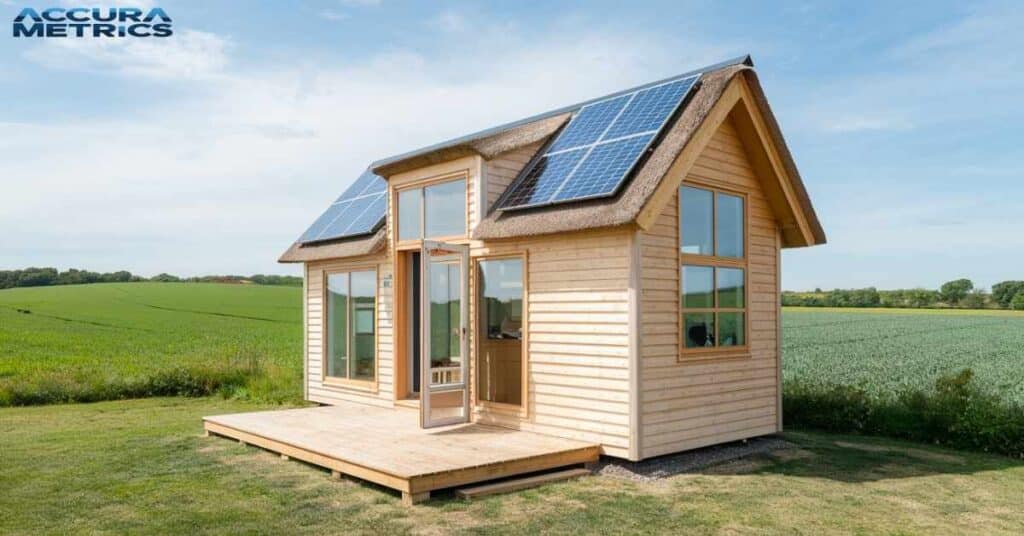
One of the biggest challenges of owning a tiny house is understanding the zoning laws and finding a place to put it. Here are some important things to know:
Can You Place a Tiny House on Any Property?
Zoning laws vary greatly depending on location. In many urban and suburban areas, you may need to seek special zoning approval or live in designated areas for tiny homes. However, rural areas tend to have fewer restrictions.
Legal Locations for THOW Parking
In general, tiny houses on wheels can be parked in the following locations:
- Tiny house communities: Some areas have designated tiny home villages where people can park their homes.
- RV parks and campgrounds: Some allow as long as they meet certain requirements.
- Private land: If you own the land, you can often park your tiny house on it, but zoning restrictions may still apply.
Read More “Mount Everest: Its Measurement and Other Fascinating Facts”
Tiny House Cost and Budget
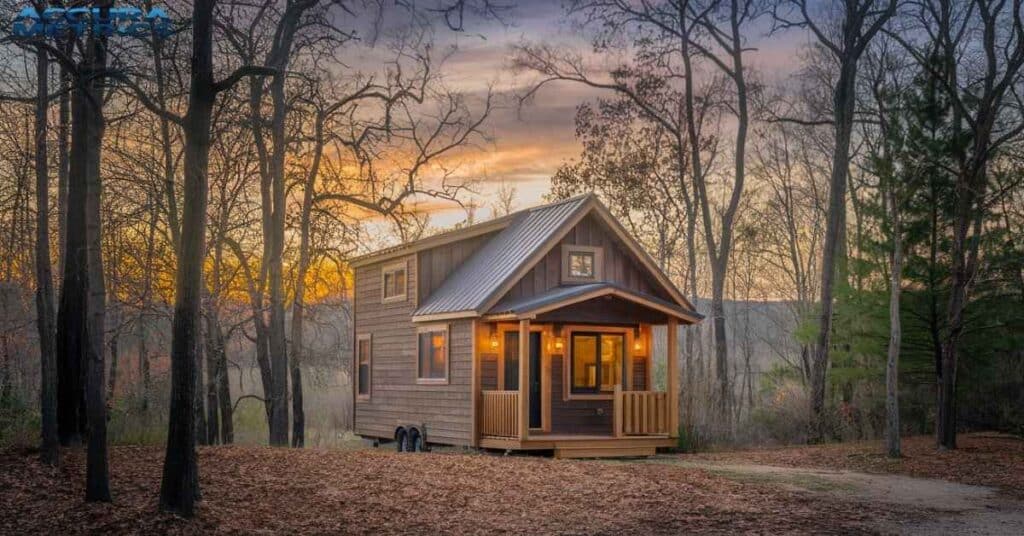
The cost of building a tiny house depends largely on its size, materials, and whether it is on wheels or built on a foundation. On average, a tiny house can cost anywhere from $20,000 to $100,000 or more.
Tiny House Building Costs Breakdown
| Item | Estimated Cost Range |
| Tiny house trailer | $4,000 – $10,000 |
| Construction materials | $10,000 – $40,000 |
| Plumbing and electrical | $2,000 – $8,000 |
| Finishing (paint, trim) | $3,000 – $10,000 |
Case Study: Tiny House in the USA

Background
In 2017, a family in California decided to build a tiny house. They wanted a more sustainable lifestyle while saving on housing costs. Their new home was only 250 square feet but designed with everything they needed.
Challenges and Solutions
Finding a legal place to park was difficult due to zoning laws. They were able to get a special permit to park their tiny house on a private property. They kept the budget low by using recycled materials and building it themselves.
Outcome
The project cost $30,000. The family now enjoys minimal living costs and greater mobility. Their tiny house allows them to travel and live freely without the burden of traditional housing expenses.
FAQs about tiny houses
How small is a tiny house?
A tiny house is typically less than 400 square feet. The exact size varies based on whether the house is on wheels or a fixed foundation, but most tiny houses fall within the 100-400 square feet range.
What are the most common dimensions for a tiny house?
Common sizes for tiny houses range from 120 to 400 square feet. Tiny houses on wheels tend to be smaller, usually around 350 square feet, while those on foundations may be slightly larger..
What is the maximum size for a tiny house?
While some consider 400 square feet the maximum for a tiny house, there is no universal standard. Homes exceeding this size might still be called tiny homes depending on local regulations
How does the size of a tiny house on wheels compare to one on a foundation?
Tiny houses on wheels are generally smaller, usually under 350 square feet, due to the size limitations of the trailer. Stationary tiny houses on foundations can range from 100 to 400 square feet.
Is a 600 square foot house considered a tiny house?
No, a 600 square foot house is typically classified as a small house, not a tiny one. Tiny houses are usually considered to be under 400 square feet.
Quiz: About Tiny Houses?
What is the average size of a tiny house?
a) 100-200 square feet
b) 200-400 square feet
c) 400-600 square feet
Which factor can vary by state for tiny houses?
a) Color
b) Zoning laws
c) Furniture
What is the typical weight limit for a tiny house trailer in the U.S.?
a) 10,000 pounds
b) 14,000 pounds
c) 20,000 pounds
Answer: 200-400 square feet, Zoning laws, 14,000 pounds
Continue reading “15 Common Things That Are 5 Feet Long”
Conclusion
Tiny houses are a growing trend, offering a minimalist approach to living that many people find appealing. Whether you choose a small fixed home or a mobile tiny house on wheels, understanding the dimensions and layout options available is essential for making the most of your tiny living experience.
Considering the average size of tiny houses, their dimensions on trailers, and legal considerations, you can make an informed decision on whether a tiny house is right for you. Whether you are seeking a tiny house living full-time or looking for a weekend getaway, there is a tiny home to fit every lifestyle.
Get the facts “How Big is New York City? Dimensions and Population Over Time”

My name is Linda, and I am an experienced blogger with a passion for precision and craftsmanship. With years of expertise, I contribute to Accura Matrics, bringing a wealth of knowledge and a keen eye for detail. My insightful articles and expert tips are designed to help readers achieve excellence in their measurements and dimensions projects, offering valuable guidance in the pursuit of accurate and thoughtful design.







